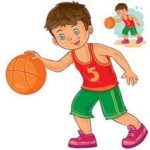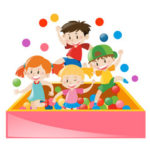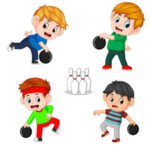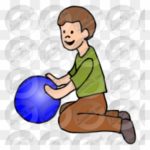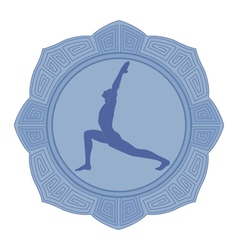
by Neetu | Jun 16, 2020 | Fitness Activity
Posture: Anjanaya-asana – The Salutation Pose
(Pronunciation: Ahn-jah-nay-ah-sa-na)
Description: The Sanskrit word Anjaneya means salutation or praise from the root and which means to honor, to celebrate, to anoint.
Performing Instructions
- Sit comfortably in the vajra-asana (thunderbolt pose).
- Kneel up on your knees until your back, buttocks, and thighs are aligned.
- Extend your left foot forward bending your left knee at about a 90-degree angle.
- Place the palms of your hands together at the heart in the Anjali-mudra.
- Raise your arms straight up keeping the palms together while bending the head backward and looking up.
- Slowly bend backward stretching the arms backward and straightening out the right leg. Hold this position for as long as comfortable while breathing gently through the nostrils.
- Come back to the vajra-asana (thunderbolt pose) then reverse the posture by alternating legs.
Comments:
The Anjaneya-asana combines several postures and mudras (gestures) in a fluid, evolving flow that combines motion, stretching, and holds. It delivers great benefits for the back, arms, chest, legs, and hips. Regular practice will strengthen concentration and improve balance.
Perform this posture with a sense of reverence and praise. Take a moment to reside in silence and peace as your hands are held at the heart in the gesture (mudra) of salutation (Anjali-mudra). Keep the intention of praise in mind as you extend your arms skyward. Feel your entire body-mind-heart extending outward in recognition of the sacredness of life.
Duration/Repetitions:
Repeat twice on each side.
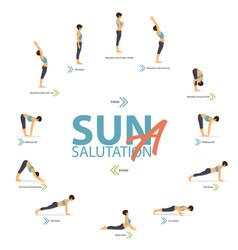
by Neetu | Jun 16, 2020 | Fitness Activity
Posture: Surya-namaskar – Sun Salutation
(Pronunciation: soor-yee-ah-nahma-skar)
Description:
The Sanskrit word Surya means sun. Namaskar is the Hindi word for Namaste, from the root nam, to bow. Namaskar means salutation, salute, greeting, or praise.
STEP ONE:
Stand facing the direction of the sun with both feet touching. Bring the hands together, palm to- palm, at the heart.
STEP TWO:
Stand facing the direction of the sun with both feet touching. Bring the hands together, palm-to-palm, at the heart. Inhale and raise the arms upward. Slowly bend backward, stretching arms above the head.
STEP THREE:
Exhale slowly bending forward, touching the earth with respect until the hands are in line with the feet, head touching knees.
STEP FOUR:
Inhale and move the right leg back away from the body in a wide backward step. Keep the hands and feet firmly on the ground, with the left foot between the hands. Raise the head.
STEP FIVE:
While exhaling, bring the left foot together with the right. Keep arms straight, raise the hips, and align the head with the arms, forming an upward arch.
STEP SIX:
Exhale and lower the body to the floor until the feet, knees, hands, chest, and forehead are touching the ground.
STEP SEVEN:
Inhale and slowly raise the head and bend backward as much as possible, bending the spine to the maximum (as in the naga-asana).
STEP EIGHT:
While exhaling, bring the left foot together with the right. Keep arms straight, raise the hips, and align the head with the arms, forming an upward arch.
STEP NINE:
Inhale and move the right leg back away from the body in a wide backward step. Keep the hands and feet firmly on the ground, with the left foot between the hands. Raise the head.
STEP TEN:
Exhale slowly bending forward, touching the earth with respect until the hands are in line with the feet, head touching knees.
STEP ELEVEN:
Inhale and raise the arms upward. Slowly bend backward, stretching arms above the head.
STEP TWELVE:
Stand facing the direction of the sun with both feet touching. Bring the hands together, palm-to-palm, at the heart.
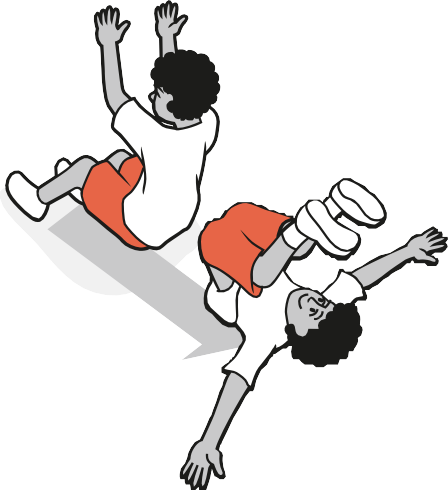
by Santosh | Jun 11, 2020 | Fitness Activity
Movement skills/concepts
Falling forwards and backwards, landing on feet and body awareness.
Set-up
Benches, box tops, mats, hoops, ropes, chalk.
Children, equipment and targets are spread out in a general space.
Activity
Children move in random directions to a specified pattern (e.g. eight runs, fall forwards and freeze; or eight skips, jump to stand still, and fall backwards).
Children ‘make-believe’ they are falling and landing. Examples are:
- landing from a parachute jump
- falling from a bicycle
- falling while ice skating or rollerblading
- being tripped in a game of netball/soccer
- losing balance while walking along a steep cliff and rolling down the bank
- slipping off the monkey bars and falling on the
Can you see …?
- landing surfaces safe and even
- awareness of others
- correct techniques
You could ask …
What is the first thing you need to think about when you lose your balance or start to fall? Why is this?
Children often break an arm or collarbone when they fall. What can you do to prevent this when you fall?
COOL DOWN/ CLOSURE
Review Skill/Activity, stretching, and questions.
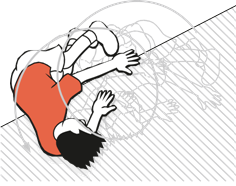
by Santosh | Jun 11, 2020 | Fitness Activity
Movement skills/concepts
Forward shoulder roll at speed from different levels and directions.
Set-up
Slope or ramps, firm mats or suitable surface. Children are freely spaced.
Activity
Children practise a forward shoulder roll.
- fall forwards down a slope – look sideways
- from one side of a line, roll diagonally forwards to other side
- roll diagonally over elastic
- try chessboard rolling – roll from one square (or circle) diagonally forwards to the next
Can you see …?
- body extended and low
- hands flat, turned inwards
- landing with lower arm–upper arm–shoulder–back–feet
- falling and rolling slowly at first, then with increasing speed
You could ask …
How do you feel about falling forwards fast? How can you fall forwards fast but safely?
Variations
Add obstacles: Dive over a low obstacle and roll forwards.
COOL DOWN/ CLOSURE
Review Skill/Activity, stretching, and questions.

by Santosh | Jun 11, 2020 | Fitness Activity
Movement skills/concepts
Balancing using equipment, body and space awareness.
Set-up
Hanging ropes with mats underneath.
Activity
On a hanging rope, children explore ways of balancing in an upright position.
Can you hang while …?
- supporting your weight with your hands
- supporting your weight with your hands and legs
- creating some basic shapes (e.g. wide, narrow, curled and twisted with your free body parts)
- creating symmetrical and asymmetrical shapes
Can you see …
- tight muscles
- tight grip on the rope
You could ask …
What do you need to do with your body to hold your position on the rope?
Variations
Inverted balance: If children have sufficient upper arm/shoulder strength, try an inverted balance on the hanging rope.
COOL DOWN/ CLOSURE
Review Skill/Activity, stretching, and questions.







